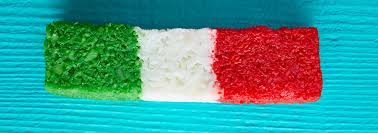Mexican candy is a delightful fusion of indigenous Mesoamerican traditions and European influences, resulting in a rich tapestry of flavors and textures. From the ancient Mayan Mexican candy and Aztec civilizations to modern-day confections, these sweets offer a unique glimpse into Mexico’s cultural and culinary heritage.
Table of Contents
Origins of Mexican Candy
The Birth of Chocolate
The story of Mexican candy begins with the cacao bean. Indigenous cultures like the Mayans and Aztecs revered cacao, using it to create a frothy, bitter beverage flavored with spices such as chili and vanilla. This drink was not only consumed during ceremonies but also served as a form of currency. With the arrival of Spanish explorers, notably Hernán Cortés, cacao was introduced to Europe, where sugar and milk were added, transforming it into the sweet chocolate we know today. citeturn0news0
Traditional Mexican Sweets
Sugar Skulls (Calaveritas de Azúcar)
A prominent feature of the Day of the Dead celebrations, sugar skulls are crafted from sugar and decorated with colorful icing. These skulls often bear the names of departed loved ones and are placed on altars to honor them. Their origins trace back to European traditions, which were adapted and embraced in Mexican culture. citeturn0news4
Mexican Chocolate
Distinct from its European counterparts, Mexican chocolate is coarsely ground and often spiced with cinnamon, nuts, or chiles. Its rustic texture and robust flavor make it ideal for traditional beverages like hot chocolate and champurrado, a thick, warm drink made with masa. citeturn0news1
Modern Innovations in Mexican Candy

Chamoy and Sour Sweets
In contemporary times, the fusion of sweet, sour, and spicy Mexican candy flavors has led to the creation of candies coated with chamoy—a tangy, spicy sauce made from pickled fruit. This combination offers a complex taste experience that is both refreshing and fiery.
Gummies and Edibles
The global popularity of gummies has led to Mexican-inspired versions infused with flavors like tamarind, mango, and chili. Brands such as Mesobis have incorporated elements of Mesoamerican culture into their designs, offering products like pyramid-shaped gummies dusted with chili powder. citeturn0news5
Regional Variations
Pepitas (Pumpkin Seeds)
In central Mexico, pepitas are more than just a snack. Ground pepitas are used as a thickener in traditional sauces like mole, while roasted and seasoned pepitas are enjoyed as a crunchy treat. They also feature in sweets like tortitas de Santa Clara, round cookies topped with a layer of pumpkin-seed icing. citeturn0news3
The Cultural Significance of Mexican Candy

Celebrations and Rituals
Candies play a pivotal role in Mexican festivals. During the Day of the Dead, offerings include a variety of sweets, each symbolizing different aspects of life and death. The vibrant colors and intricate designs of these candies reflect the rich cultural tapestry of Mexico.
Social and Economic Impact
The production and sale of traditional candies provide livelihoods for many artisans and contribute to local economies. Markets and street vendors offer a plethora of options, from handmade lollipops to intricately designed sugar skulls, showcasing the country’s rich craftsmanship.
Also read Barbers Near Me Your Ultimate Guide to Finding the Perfect Barber
Conclusion
Mexican candy is more than just a treat; it’s a testament to Mexico’s rich history and cultural diversity. From ancient cacao beverages to modern spicy gummies, these sweets encapsulate the country’s ability to blend tradition with innovation, offering a flavorful journey through time.


